Sorted by date Results 151 - 175 of 376

"Investing in America" agenda is expected to generate $16 billion for onshoring critical minerals, processing and battery tech. As part of the Biden-Harris Administration's Investing in America agenda, the U.S. Department of Energy announced it will be funding over $3 billion to 25 selected projects across 14 states to boost domestic production of batteries and battery materials. The portfolio of selected projects is intended to support projections of over 12,000 battery...
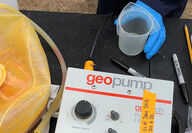
The USGS has developed tools to help companies and researchers find them all. United States Global Survey (USGS) reports have long demonstrated that while there is technically plenty of lithium found in the Earth's crust to meet demand, extracting this battery metal in the usual fashion (hard rock mining and brine evaporation) hasn't been very sustainable or cost-effective, requiring large amounts of energy, water, or infrastructure. The highest concentrations of lithium are...
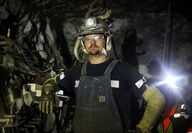
Sibanye-Stillwater gives notice to hundreds of Montana miners as palladium prices collapse. Sibanye-Stillwater, the only platinum and palladium mine in the United States, gave employees a 60-day notice of upcoming layoffs – blaming a loss of more than $350 million since the beginning of 2023 and plummeting metal pricing due to predatory Russian price dumping. The South Africa-based miner expanded in the U.S. through the purchase of Stillwater Mining Company in 2017 for $2.2 b...

H2020 SOLiDIFY consortium manufactures a powerful, inexpensive solid-state lithium battery. As the coordinator of the H2020 SOLiDIFY consortium, imec, together with 13 European partners, has announced the successful development of a high-performance lithium solid-state battery using a manufacturing process that is both cost-effective and compatible with existing lithium-ion production lines, making it a contender for commercial use – meaning prospective client manufacturers w...

Underground mineral source coupled with environmentally responsible processing presents sustainable solution for domestic rare earth production. NioCorp Developments Ltd. plans to recycle post-consumer rare earth permanent magnets and produce commercial-grade magnetic rare earth oxides at its proposed Elk Creek critical minerals project in Nebraska. All of the minerals to be produced at Elk Creek are officially designated as critical to the United States and are essential to...
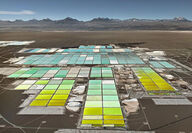
Emerging tech addresses limitations in conventional brine evaporation method for increased domestic lithium production in North America. Direct lithium extraction (DLE) technologies promise incredibly fast processing times (hours instead of months) and higher yields, broadening the range of usable brine resources across diverse geographical locations in North America. DLE methods can vary widely, with some being more energy-intensive while others require higher amounts of...

Federal grant and state support Inflation Reduction Act-compliant EV battery material production. Mitra Chem, a leading innovator in battery materials, has been selected by the state of Michigan's Competitiveness Fund and U.S. Department of Energy's (DOE) Office of Manufacturing and Energy Supply Chains (MESC) for up to $125 million in awarded funds to establish a cutting-edge manufacturing facility in Muskegon, Michigan. MESC plays a critical role in catalyzing investments...
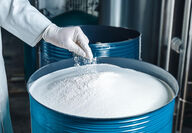
U.S. lithium production is ready to tap a massive aquifer that crosses six southern state lines. Global lithium consumption reached 180,000 metric tons in 2023, according to the United States Geological Survey, but the U.S. produces less than 1% of the world's supply. While most of the world's lithium still comes from countries like Australia, Chile, and China, the future of lithium production in the U.S. is ramping up in California, Nevada, and now Arkansas as companies like...

Automakers sign agreement to collaborate on vehicles, supply chain and clean energy tech. Two leading automotive companies have joined forces to target improved efficiencies and increased competitiveness through collaboration along lines of manufacturing and clean energy technologies. General Motors and Hyundai Motor Company have signed a memorandum of understanding (MOU) to explore future collaboration across these key strategic areas as leading global OEMs – leveraging t...
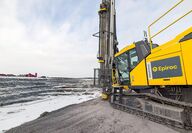
A fleet of 14 autonomous surface drill rigs to be delivered to Western Australia lithium mine. Pilbara Minerals, the world's largest independent hard rock lithium producer, has ordered a fleet of surface drill rigs from Epiroc for its Pilgangoora lithium mine in Western Australia. This large order includes 14 SmartROC D65 surface drill rigs, as well as a contract for Epiroc to provide spare parts for the surface drill rigs to keep downtime to a minimum. Several giants of the...
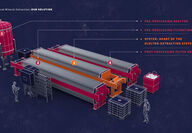
First domestic source of cobalt and nickel to be produced in new Ohio facility. This week, Nth Cycle became the first company in the United States to produce recycled nickel and cobalt. Using its patented Oyster system to produce these battery metals at its 21,000-square-foot manufacturing facility in Ohio, this system is able to upgrade black mass and nickel scrap into mixed hydroxide precipitate (MHP), a key intermediate product that can be refined into nickel and cobalt...
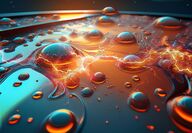
Computer simulations quickly discover an alloy of ruthenium, chromium, and titanium as a more durable, efficient, and greener catalyst. Researchers at the University of Toronto are using artificial intelligence to accelerate scientific breakthroughs in the search for sustainable energy – by using the Canadian Light Source (CLS) at the University of Saskatchewan to confirm an AI-generated formula for a new catalyst could potentially produce hydrogen fuel more efficiently. G...
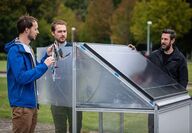
Develops panels that borrow solar electricity to generate hydrogen from moisture in the air. The first "hydrogen solar panel" ever created merges the two most powerful, clean and renewable sources and is ready for real-world trials. A team of bioscience engineers from the University of Leuven in Belgium – Johan Martens Tom Bosserez, Jan Rongé and Christos Trompoukis – has been working for over a decade on Solhyd, an idealistic plan to develop a panel that can create hydr...
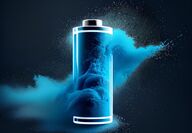
Natron plans to 40X its capacity with a 14 GW sodium-ion battery factory in Southeast U.S. Natron plans to invest nearly $1.4 billion in building a sodium-ion battery factory in North Carolina. The plant is expected to produce 14 gigawatts of sodium-ion batteries per year at full capacity, increasing Natron's production by more than 40 times its current capacity. The factory is part of Natron's strategy to leverage the growing demand for sodium-ion battery storage, according...
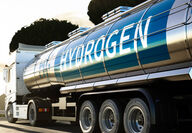
Funds go to 20 projects across 15 states for clean hydrogen infrastructure. The U.S. Department of Energy awarded nearly $62 million to fund 20 projects across 15 states to accelerate research, development, and deployment of next-generation clean hydrogen technologies. These selected projects aim to advance critical elements of hydrogen fueling infrastructure, hydrogen-powered container-handling equipment for use at ports, and to improve processes essential to the efficient...
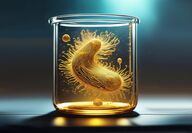
Bacteria can extract lithium, cobalt, manganese, and other minerals from batteries and e-waste. Some bacteria have been proven to synthesize metal nanoparticles from their surroundings, apparently as a detox method to protect themselves from poisoning – and a team at the University of Edinburgh aims to use them to extract lithium, cobalt, manganese, and other minerals from old batteries and e-waste. Named The Horsfall Group, the researchers have proposed a method using s...

Four-year project to improve price, safety, and domestic production of materials for lithium iron phosphate batteries. As part of efforts to improve electric vehicle battery safety, performance, and overall cost reduction, Hyundai Motor Company and Kia Corp. announced a four-year project to pioneer an eco-friendly lithium iron phosphate (LFP) battery cathode manufacturing technology together with Hyundai Steel and EcoPro BM, a battery materials research and development... Full story

Redox flow batteries are just beginning to hit their stride. Although vanadium is an abundant element, it is quite rare in its metallic form. That fact, combined with its position as a strategic metal for industry, national defense, and the green energy transition, has put it squarely on the list of critical minerals. According to the United States Geological Survey (USGS), "Estimated U.S. apparent consumption of vanadium in 2023 increased by 27% from that in 2022....
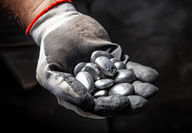
Nickel's continuing journey toward clean processes and domestic production. Nickel has a complex relationship with the ongoing energy transition: It provides relatively inexpensive energy density and greater capacity to the lithium-ion batteries powering electric vehicles and storing clean energy, helping to lower the cost of each kilowatt hour. Its properties have been instrumental in untethering the portable electronics we use every day and incorporating clean power...

Indispensable, expensive, and rare – PGMs get a green upgrade. Back in 1950, the first catalytic converter in the United States was a box bolted onto a car's undercarriage to reduce tailpipe emissions. It was patented by French mechanical engineer Eugene Houdry, who was concerned about the effects of automobile exhaust on the good people of Los Angeles. And it would have worked if it had not been for the octane-boosting lead then being added to fuel, which could choke any c...

Will the controversial metal find its place in green tech? About 30 years ago, nobody thought much about cobalt. Today, this metal, with myriads of uses, is one of those elements that gets dragged into the spotlight due to the role it plays in electric vehicle batteries, with critics citing the disparity between the environmental and social costs of producing cobalt and the green tech solutions this critical metal enables. But we can't build a clean energy future without...

AI-driven assessment estimates that 75% of the global lithium-ion battery supply chain is tainted by human rights violations. An AI-driven supply chain risk assessment platform by Infyos has discovered evidence that many of the world's largest automotive, energy storage, consumer electronics, and heavy industry companies are using lithium-ion batteries tainted by human rights abuses in one or more areas of their supply chain. Infyos has been working with some of the world's... Full story
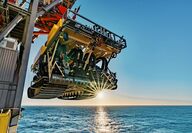
Incalculable riches, delicate ecosystem, and the green energy future. Deep-sea mining has captured the world's attention as a uniquely promising source of the metals needed for lithium-ion batteries powering the green energy future and a bitterly controversial topic of debate. Undersea deposits contain quantities of nickel, cobalt, copper, and manganese sufficient to replace every U.S. car on the road today with an electric vehicle. They also host some of the most diverse, lit... Full story

The automaker’s first with solid-state batteries. Solid-state batteries are available now, but scaling the technology up to electric vehicle production rates is still several years out. With the potential of nearly twice the energy density of lithium-ion, solid-state batteries can boost power and range while also lowering charge times. The world got its first look at the electric GT-R after Nissan unveiled the Hyper Force EV concept last October. An electric version of N... Full story

Space mining could provide rare earths, iron, hydrogen, and other in-situ resources for lunar and Martian outposts. The most expensive aspect of space exploration comes in the form of moving payloads. Every ounce on a rocket requires a fuel increase, resupply missions are expensive, and as astronaut crews – human or robotic – become more independent of Earth, long-term missions become increasingly feasible. Future astronauts will need to collect and process ext... Full story